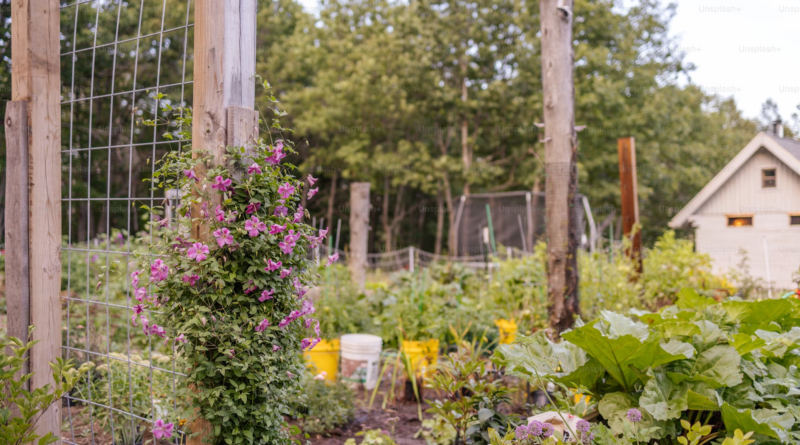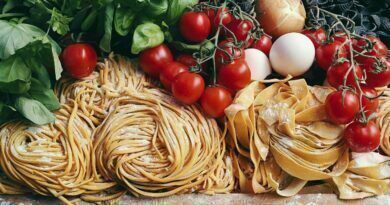May Allotment Guide: Expert Tips for a Productive Growing Season
May is a pivotal month in the gardening calendar, offering a key window for planting and cultivating a wide variety of crops. The longer daylight hours and warmer weather set the stage for vibrant growth, making it a crucial time to set the tone for the entire growing season. Achieving success in your allotment during May requires thoughtful planning, strategic planting, and careful execution.
This month marks the end of the frost season, giving you the green light to plant tender crops such as tomatoes, peppers, courgettes, and cucumbers. Warmer temperatures allow plants to thrive and grow rapidly, while the extended daylight provides ample energy for photosynthesis. It’s also the perfect time to directly sow warm-season crops such as beans, sweetcorn, and squash, which will flourish as summer approaches.
In addition to planting, May demands attention to garden maintenance, including soil preparation, weed control, and pest management. Your plants will need regular watering, feeding, and care to ensure they remain healthy and productive. Implementing efficient watering practices, such as using mulch to retain soil moisture and setting up rainwater harvesting systems, can help conserve water and promote sustainable gardening.

Furthermore, vigilance in monitoring for pests and diseases is essential to protect your crops. Early detection and intervention can prevent issues from escalating and affecting your harvest. Organic pest control methods can offer natural and effective solutions to manage pests while maintaining ecological balance.
May is also an opportune time to plan ahead for summer by considering succession planting, crop rotation, and providing shade for heat-sensitive plants. These strategies help extend your harvest season and ensure a productive and healthy allotment throughout the summer months.
In this blog post, we will explore each of these aspects in greater detail, providing expert advice and tips to help you navigate the opportunities and challenges of gardening in May. By following these guidelines, you can maximise your allotment’s potential and enjoy a fruitful and rewarding growing season ahead. Let’s dive in!
1. Planting and Sowing
May is an ideal time to start planting and sowing a variety of crops:
- Vegetables: Begin sowing warm-season crops such as runner beans, courgettes, and sweetcorn directly into the soil. These plants thrive in warmer temperatures and will grow well as the month progresses. May is also an excellent time to transplant young plants such as tomatoes, peppers, and cucumbers once the risk of frost has passed. Make sure to harden them off first to avoid transplant shock.
- Root Vegetables: Continue sowing root vegetables like carrots, beetroots, and radishes. For successful germination, ensure the soil is fine, loose, and well-prepared. Thin out the seedlings as they grow to allow proper spacing and avoid overcrowding.
- Leafy Greens: Sow leafy greens such as spinach, lettuce, rocket, and Swiss chard in well-drained soil. Sow these crops in succession to extend the harvest season, ensuring you have a steady supply of fresh greens throughout the summer.
- Herbs: Sow herbs like basil, coriander, and dill in May. These aromatic plants will thrive in the warmer weather, and you can enjoy their fresh flavours in your cooking throughout the summer. Mint, parsley, and oregano are also good choices for this time of year.
2. Water Management
Effective water management is essential for a healthy and productive allotment:
- Rainwater Harvesting: Consider setting up a rainwater harvesting system to collect and store rainwater for use in your garden. This eco-friendly practice not only reduces water bills but also provides your plants with natural, chemical-free water. Rainwater is ideal for irrigation because it is slightly acidic and contains nutrients beneficial for plants.
- Watering Techniques: Water your plants in the early morning or late evening to minimise evaporation and ensure your plants receive sufficient moisture. Focus on watering the base of the plants rather than the foliage to promote deep root growth and reduce the risk of disease.
- Mulching: Applying a layer of mulch around your plants helps retain moisture, suppress weeds, and keep the soil cool. Organic materials such as straw, wood chips, or compost are excellent mulching options.
3. Weed Control and Maintenance
Maintaining a tidy and well-managed allotment involves regular weed control and maintenance:
- Weed Control: May is a time when weeds begin to compete with your crops for resources. Regular weeding is essential to keep your allotment healthy. Remove weeds by hand or use a hoe to eliminate them before they establish deep roots and compete with your crops for nutrients and moisture.
- Pruning and Training: Train climbing plants such as tomatoes, beans, and cucumbers using supports like stakes, canes, or trellises. Prune any excess growth on fruit bushes or trees to maintain their shape, improve air circulation, and encourage better fruiting.
4. Pest and Disease Management
Keeping your plants healthy and free from pests and diseases requires careful monitoring and proactive measures:
- Inspect Regularly: Check your plants regularly for signs of pests or diseases. Look out for discoloured leaves, holes in foliage, or unusual patterns of damage. Early detection is key to preventing significant damage and allows you to take swift action.
- Natural Solutions: Embrace natural pest control methods such as introducing beneficial insects (like ladybirds or lacewings) or companion planting to deter pests. For example, planting marigolds alongside vegetables can help repel certain pests.
5. Soil Care and Fertilisation
Nourishing your soil and feeding your plants are vital for healthy growth and bountiful harvests:
- Feed Your Plants: As your crops begin to grow, they will require additional nutrients. Apply organic fertilisers such as compost, well-rotted manure, or seaweed extract to nourish your plants and maintain healthy soil. Granular and liquid feeds can also be used, depending on the needs of your specific plants.
- Soil Testing: Consider testing your soil to identify any nutrient deficiencies. Soil testing kits are available at garden centres and can help you understand the current nutrient levels in your soil, allowing you to adjust your fertilisation strategy accordingly.
6. Prepare for Summer
Preparing your allotment for the upcoming summer months is essential for sustained productivity and plant health:
- Shade and Protection: Prepare for the possibility of hot weather by providing shade for sensitive plants using netting or shade cloth. Protect plants like lettuce, spinach, and other leafy greens from the harsh midday sun to prevent wilting and bolting.
- Plan Succession Planting: To ensure a continuous harvest throughout the summer, plan for succession planting by sowing crops at intervals. This technique helps maintain a steady supply of fresh produce and prevents a sudden glut.

May is a busy but rewarding month for allotment gardening. By following these expert tips, you can optimise your garden’s productivity, conserve resources, and enjoy the bountiful harvests ahead. The investments of time and effort you make now will pay off with flourishing crops and successful harvests throughout the growing season.
This month offers the perfect opportunity to refine your gardening practices and explore innovative techniques. Whether you are adjusting your watering routine, experimenting with succession planting, or incorporating new organic pest control methods, these small changes can yield significant results. Take this time to observe how your plants respond to different strategies, and adjust as needed to achieve optimal growth and resilience.
Furthermore, May is an excellent time to enjoy the process of gardening and appreciate the natural world around you. Embrace the warmer weather and longer days to spend quality time in your allotment. Watch as your plants flourish and your garden transforms into a vibrant, productive space.

Gardening on your allotment is a hands on adventure filled with trial, error, and triumph. Every season teaches you something new, whether it’s how to outsmart pests, improve your soil, or squeeze more harvests from your plot.
This May, why not test a no-dig bed, experiment with a new companion planting pair, or trial a homemade organic pest control? Even small changes like trying a new mulch or rotating crops more effectively can make a big difference in your allotment’s productivity.
The effort you put in now preparing beds, nurturing seedlings, and staying on top of weeds will pay off all season long. Before you know it, you’ll be harvesting crisp radishes, juicy strawberries, and the first tender courgettes of summer.
So pull on your wellies, grab your trusty trowel, and lose yourself in the simple satisfaction of working your plot. There’s nothing quite like the taste of homegrown produce or the pride of a well-tended allotment.
Here’s to a season of strong growth, fewer slugs, and bumper harvests. Happy growing




